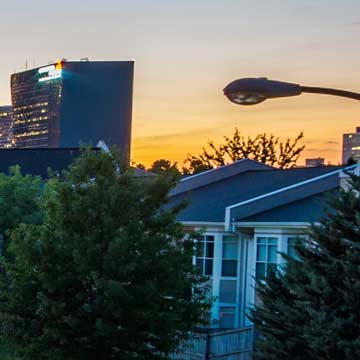High court to take new look at partisan electoral districts
National Court News
The Supreme Court is plunging back into the issue of whether electoral districts can be too partisan.
Disputes have arisen in cases involving North Carolina's heavily Republican congressional map and a Democratic congressional district in Maryland, and the justices said Friday they will hear arguments in March.
The high court could come out with the first limits on partisan politics in the drawing of electoral districts, but also could ultimately decide that federal judges have no role in trying to police political mapmaking.
The court took up the issue of partisan gerrymandering last term in cases from Wisconsin and the same Maryland district, but the justices failed to reach a decision on limiting political line-drawing for political gain.
Justice Anthony Kennedy had said he was open to limits. He has since retired, and Justice Brett Kavanaugh has taken Kennedy's seat. He has no judicial record on the issue.
The court again has taken one case in which Democrats are accused of unfairly limiting Republicans' political power and one in which Republicans are the alleged culprits. The court also has the entire North Carolina congressional map before it, but only the one Maryland district.
In both cases, however, lower courts have found that the party in charge of redistricting — Republicans in North Carolina, Democrats in Maryland — egregiously violated the rights of voters in the other party.
The North Carolina map was redrawn in 2016 because federal courts determined two districts originally drawn in 2011 were illegal because of excessive racial bias.
In November, Republicans won at least nine of the 13 seats in North Carolina's congressional delegation and appeared to have won a 10th seat, in keeping with how many they held before the 2016 remapping. But state election officials have so far declined to certify the results in the 9th District in south-central North Carolina because of allegations of absentee ballot fraud.
A key Republican in the North Carolina redistricting process, state Rep. David Lewis, has said that he drew 10 Republican districts because he did not "believe it's possible to draw a map with 11 Republicans and two Democrats."
Related listings
-
Supreme Court won't hear case over California beach access
National Court News 09/29/2018The Supreme Court is refusing to hear an appeal from a California billionaire who doesn't want to open a road on his property so that the public can access a beach.The justices said Monday that they will not take up Vinod Khosla's appeal of a Califor...
-
3 hurt in court shooting leave hospital; gunman identified
National Court News 09/18/2018The wife of a gunman killed after he opened fire at a Pennsylvania municipal building Wednesday said in a social media post that she was OK but did not say whether she had been injured in the shooting.Crystal Dowdell, 39, posted on her Facebook accou...
-
Senate begins final day of Supreme Court nominee hearings
National Court News 09/08/2018Senators began the fourth and final day of hearings for Supreme Court nominee Brett Kavanaugh on Friday, but with the nominee finished answering questions the day they seemed unlikely to alter his path to confirmation.Senate Democrats worked into the...

USCIS Will Begin Accepting CW-1 Petitions for Fiscal Year 2019
On April 2, 2018, U.S. Citizenship and Immigration Services (USCIS) will begin accepting petitions under the Commonwealth of the Northern Mariana Islands (CNMI)-Only Transitional Worker (CW-1) program subject to the fiscal year (FY) 2019 cap. Employers in the CNMI use the CW-1 program to employ foreign workers who are ineligible for other nonimmigrant worker categories. The cap for CW-1 visas for FY 2019 is 4,999.
For the FY 2019 cap, USCIS encourages employers to file a petition for a CW-1 nonimmigrant worker up to six months in advance of the proposed start date of employment and as early as possible within that timeframe. USCIS will reject a petition if it is filed more than six months in advance. An extension petition may request a start date of Oct. 1, 2018, even if that worker’s current status will not expire by that date.
Since USCIS expects to receive more petitions than the number of CW-1 visas available for FY 2019, USCIS may conduct a lottery to randomly select petitions and associated beneficiaries so that the cap is not exceeded. The lottery would give employers the fairest opportunity to request workers, particularly with the possibility of mail delays from the CNMI.
USCIS will count the total number of beneficiaries in the petitions received after 10 business days to determine if a lottery is needed. If the cap is met after those initial 10 days, a lottery may still need to be conducted with only the petitions received on the last day before the cap was met. USCIS will announce when the cap is met and whether a lottery has been conducted.




